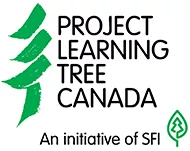News
Ticked offSeptember 18, 2018Mira Williamson Location: New Brunswick (various) Protective painter suits on, University of New Brunswick master’s student Douglas Munn and his wildlife technician Corey Robar scour the forest floors of New Brunswick for blacklegged ticks. Robar is finishing up his advanced diploma in fish and wildlife technology and diploma in forest technology at the Maritime College of Forest Technology. The Geary, NB native is assisting Munn collect data for his master’s project funded by the Public Health Agency of Canada (PHAC). This summer, they’re travelling the province sampling approximately 70 sites to pinpoint the blacklegged ticks’ geographic expansion. Munn has already discovered that counties with known breeding populations have doubled from three to six since his study began. “Essentially we go from site to site and walk around the forest with a sheet of flannel—like just a white sheet—and every so often we stop and pick off the ticks that we catch,” said Robar. “We put them in vials of alcohol, and we send them off to a lab to be identified and to be tested for different types of pathogens that they’d carry. So far, we did find some blacklegged ticks for the first time in passive surveillance in York County, so it is shown that they are spreading.”
The ticks sent to the PHAC National Microbiology Lab in Winnipeg are tested for tick-borne pathogens like Lyme Disease. Munn’s goal is to use this data to be better able to predict the blacklegged ticks’ spread and infection, looking at variables such as forest fragmentation, seasonal precipitation, and presence of hosts. He is also trying to determine if the ruffed and spruce grouse are potentially influential hosts that impact the spread of ticks. Their hearts are collected from local hunters and tested for tick-borne pathogens to determine if there is a link between the birds and ticks and if they are infected at the same percentage. Robar they’ve been typically finding the blacklegged ticks in deciduous hardwood stands, places under forest cover and with leaf litter because the ticks are less likely to dry out. Munn and Robar go through the site of the day and stop in spots where they’re likely to be found, collect the ticks and record information about the surrounding area and conditions such as the forest composition, shrub layer, herbaceous layer, cloud coverage, and temperature.
“I really enjoy the independence and just the chance to really take everything in when I’m out there,” said Robar. Robar is completing this position for his required summer work practicum. He was intrigued by the research aspect, the travel, and that it wasn’t a typical nine-to-five. After he graduates from college, Robar intends to attend UNB to pursue a Bachelor of Science in Forestry. After that, his path is unclear—his diplomas qualify him for positions in the logging industry, silviculture, wildlife, and conservation among others, but he may be leaning towards research for his future career. All he knows for sure is that he wants to be outdoors. “When I first got out of high school, I did go to UNB for a semester in business, but it really did not take long for me to realize that that was not what I’d be looking to do for the rest of my life,” said Robar. “I’d be sitting in class thinking ‘geez I just want to get out in the woods, I want to go fishing, I want to explore a little bit.’ And it’s always been something I’ve been interested in, since a young age.” Munn also emphasizes the value of pursuing a career in wildlife research, citing the ability to solve modern problems related to climate change, affect conservation policy, and spend plenty of time in nature. “If you don’t want to sit in an office for the rest of your life, you don’t have to. There is always wildlife research being conducted, no matter the season or place,” he said. “There are so many different positions in this field, it’s unbelievable—from journalism and public outreach to field technicians and professors.” Learn more about removing and submitting ticks for testing here.
|





